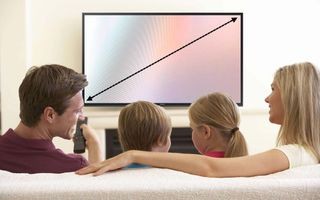Buying a new smart TV can feel overwhelming. From screen size and resolution to HDR and HDMI, the jargon alone can be confusing. This guide breaks down the key factors to consider when comparing smart TVs, helping you make an informed decision.
Essential Factors to Compare Smart TVs
Screen Size and Viewing Distance
Screen size is crucial and depends on your room size and viewing distance. A good rule of thumb is to sit at a distance roughly 1.5 times the screen height for 4K TVs and 3 times the screen height for HD TVs. 55 to 75 inches is the current sweet spot for most living rooms.
Resolution: 4K vs. 8K
While 8K resolution offers incredible detail, 4K is currently the standard and offers excellent picture quality. 8K content is still limited, making 4K a more practical choice for most buyers. Avoid 1080p unless you’re looking for a very small secondary TV.
HDR (High Dynamic Range) for Vibrant Colors
HDR significantly enhances color accuracy, contrast, and brightness. Look for TVs that support HDR10, the basic standard, and Dolby Vision for the best HDR experience. Dolby Vision content is more widely available than HDR10+.
Refresh Rate: Smooth Motion for Movies and Gaming
Refresh rate, measured in Hertz (Hz), impacts motion clarity. Aim for at least 120Hz for smooth action in movies, sports, and gaming. Higher refresh rates reduce motion blur.
HDMI Ports and Connectivity: Future-Proofing Your Setup
Ensure your TV has sufficient HDMI ports (at least four) to accommodate your devices. Prioritize HDMI 2.1 ports for features like Variable Refresh Rate (VRR) and enhanced Audio Return Channel (eARC), especially for next-gen gaming consoles.
Panel Technology: OLED vs. LED
OLED TVs offer superior picture quality with perfect blacks and incredible contrast, but come at a premium price. LED TVs, especially those with Mini-LED backlighting, offer a more affordable alternative with good picture quality. QLED TVs utilize quantum dots to enhance color and brightness in LED TVs.
Smart TV Features and Operating System
Most TVs are now smart TVs with built-in streaming capabilities. Consider the operating system (Roku, Android TV, webOS, etc.) and ensure it supports your preferred streaming services.
Sound Quality and Soundbars
TV speakers are often lacking. Plan on purchasing a soundbar to significantly improve your audio experience. Consider soundbars with Dolby Atmos support for immersive surround sound.
Making the Right Choice
Comparing smart TVs involves balancing your budget, desired features, and viewing needs. By carefully considering these key factors, you can choose the best smart TV that provides an enjoyable entertainment experience for years to come. Don’t be afraid to read reviews and compare models before making a purchase.
